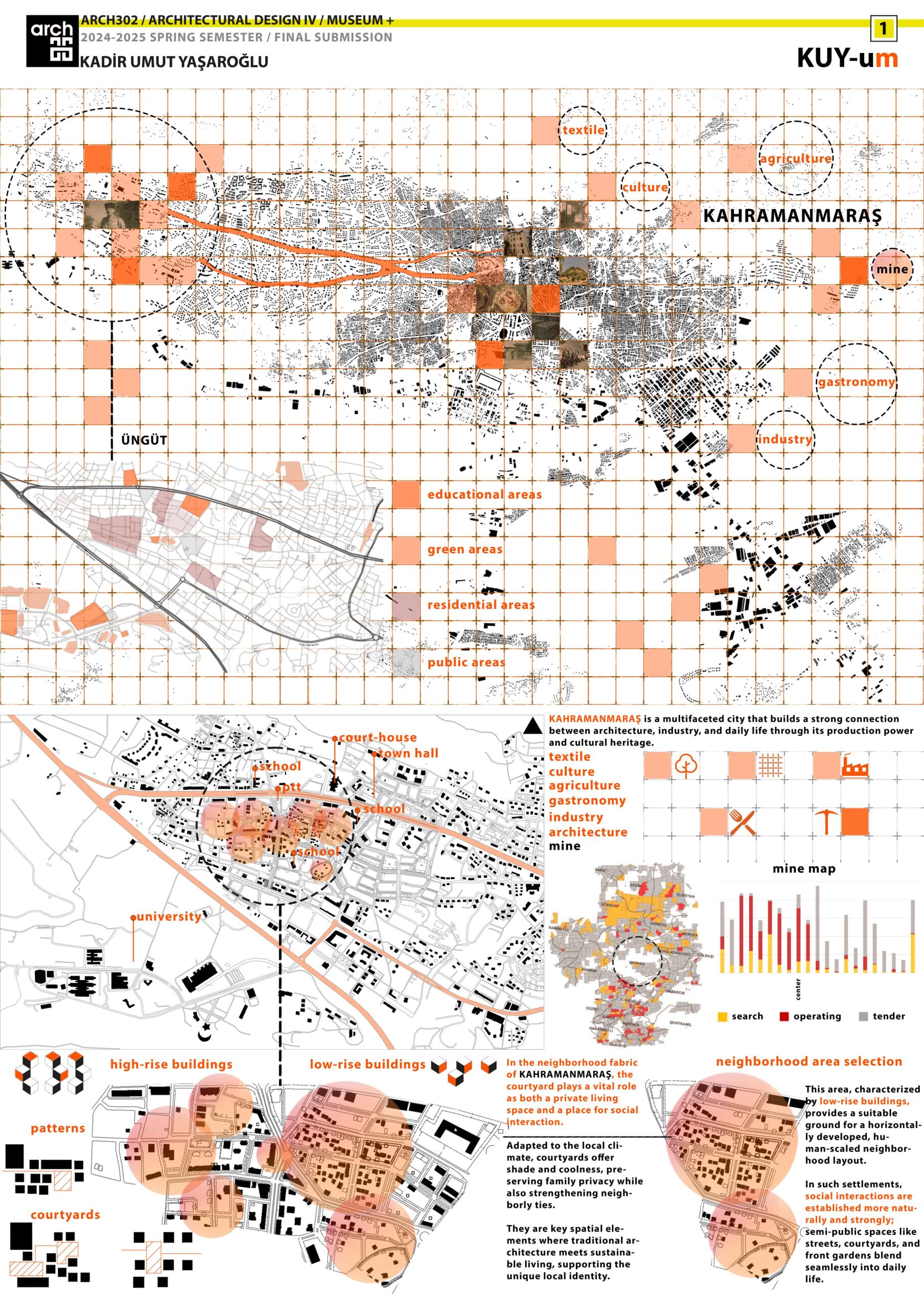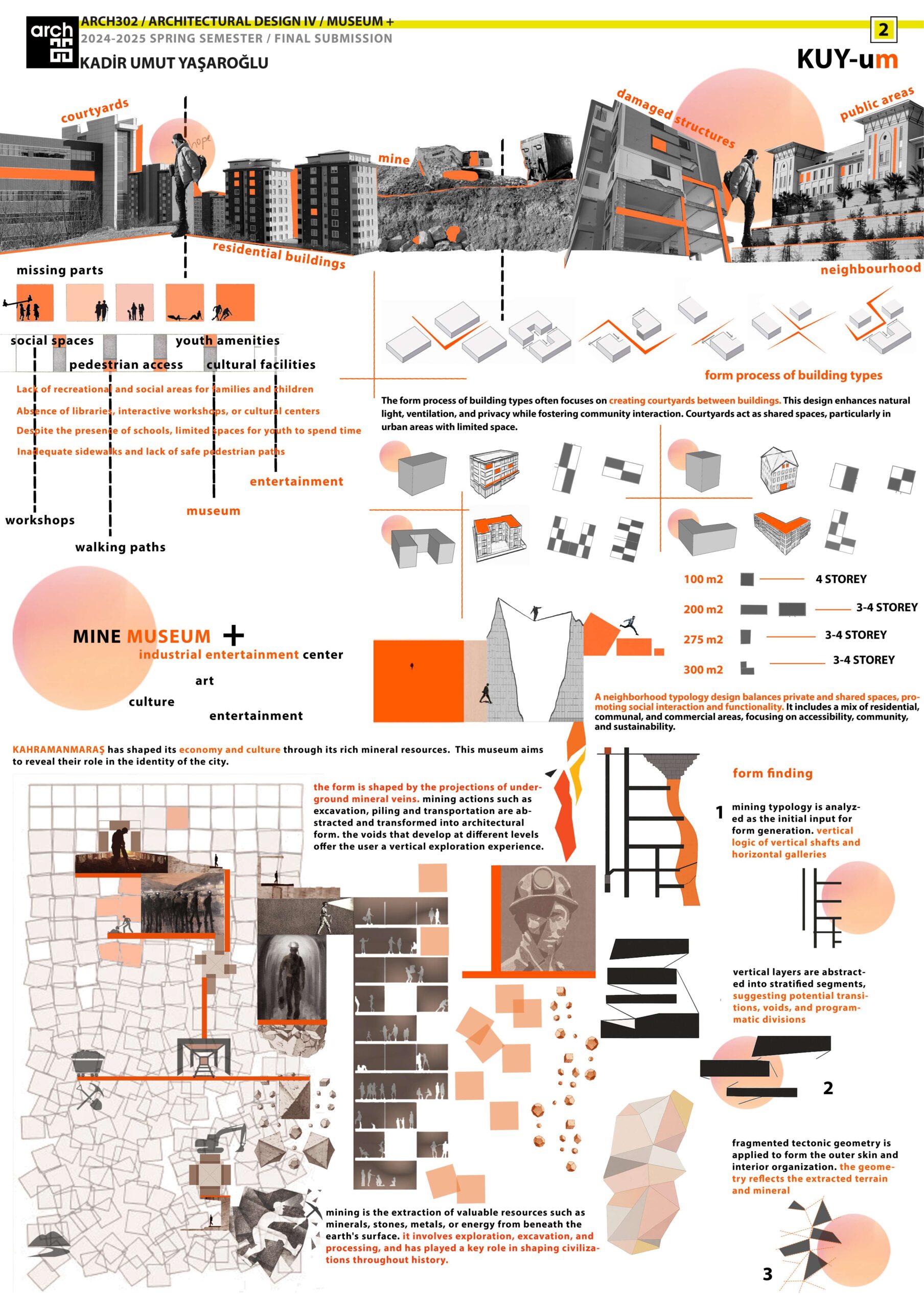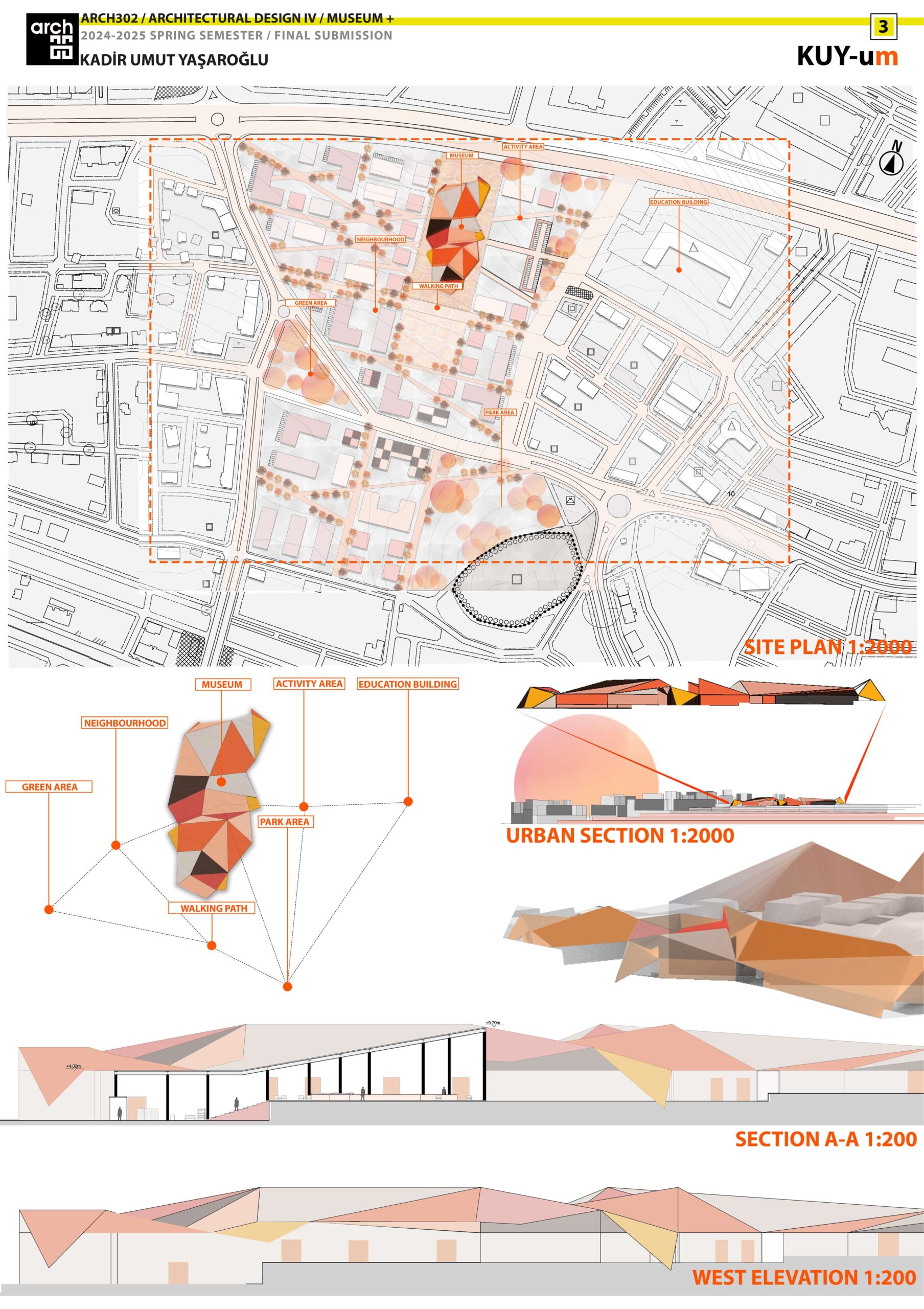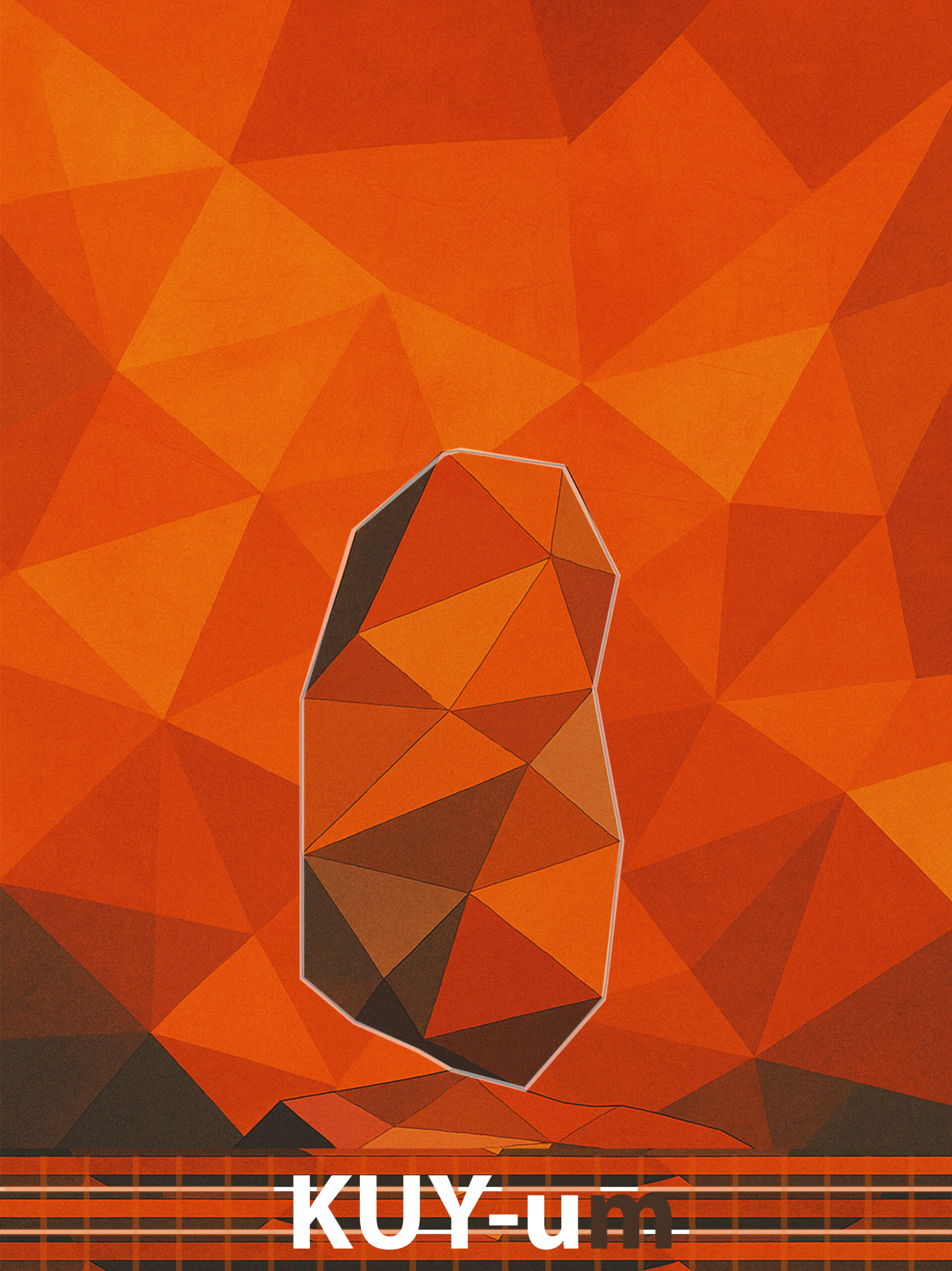KUY-um / Kadir Umut Yaşaroğlu
This architectural project aims to blend the industrial heritage of the past with the public spaces of the future through an innovative neighborhood design. At the heart of the design lies a mining museum, but this museum is much more than a typical, enclosed, and inward-looking building. Instead, the museum acts as the communal courtyard of the neighborhood—bringing people together, guiding circulation, encouraging social interaction, and promoting learning. It functions as a central void that fosters connection and engagement.
The Role of Courtyards and Spatial Organization
One of the key design principles of the project is to use courtyard-type open spaces to establish interaction among users and create spatial continuity. The building masses surrounding the museum engage with these courtyards, enriching the perception of indoor and outdoor spaces. Each courtyard has a distinct function: one serves as a space around exhibition areas, while another provides areas for relaxation and social gatherings. This layered approach transforms the museum from a simple exhibition space into a living piece of the neighborhood.
Diverse Volumes and Envelope Design
The museum is not designed as a single mass but as a system of separate yet interconnected volumes. Each volume represents a different function: permanent exhibitions, workshops, digital experience areas, and industrial game/interaction units. These volumes vary in both programmatic content and spatial expression, and their envelopes are designed accordingly.
Some envelopes are designed with raw metal surfaces, referencing the industrial past, while others use glass or permeable surfaces that open toward the neighborhood, creating a sense of transparency and integration. This design ensures that there is no rigid boundary between the museum and the surrounding neighborhood; instead, there is a porous interface that encourages interaction.
Industrial Entertainment and Community Engagement
This project is not only a museum but also an industrial entertainment center. Visitors can experience old mining techniques through digital simulations, participate in creative production workshops designed for children, or gather in the large courtyards for community events. In this way, the museum becomes more than just a space for showcasing the past; it becomes a living, interactive environment that fosters engagement and creativity.





